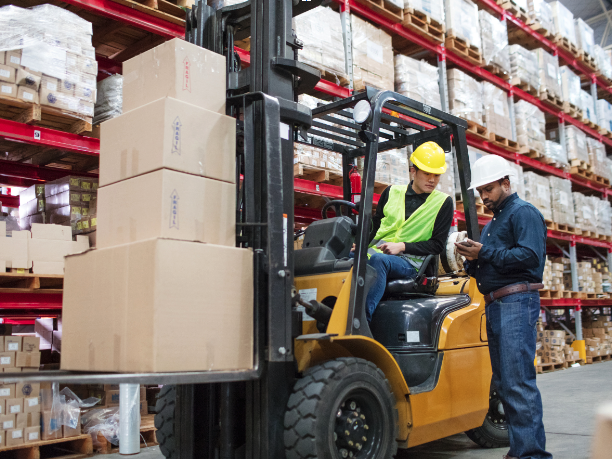SafeDE News
Smarter workplaces are safer workplaces. SafeDE is your resource for OSHA news, regulation changes, recalls, and everything to keep your business safe.
Workplace Safety Tips: Protect Yourself with PPE and More
Workplace safety is a significant matter in any business operation. Safety should be the top priority, no matter what industry it is in or the size of its workforce.
Employees want to feel safe. And certainly, they have the right to work in a hazard-free environment. That's why employers have a legal obligation to provide a safe workplace.
Without proper safety policies, physical harm may come to employees. Businesses may suffer from financial losses and, worse, reputational damage.
This article will outline the key workplace safety tips for employees.
What Is Workplace Safety?
Safety in the workplace means a workplace that is free from potential hazards. Businesses must ensure employees are not exposed to harmful conditions on the job. A slippery surface, a toxic material, and an unsafe ladder are all considered dangerous.
To protect them, safety measures must be taken. These measures will reduce the risk of workplace injuries or even loss of life.
Employers may do so by doing the following:
- Providing appropriate protective equipment
- Training employees on safety procedures
- Maintaining a safe working environment
If businesses don't take safety seriously, the consequences may be tragic or fatal. Fines and legal action will surely follow. Damage to employee morale is even more detrimental. Loss of life is the most ruinous ramification.
A business with unsafe conditions and disregard for safety practices may experience decreased productivity. Costs will also surge due to insurance premiums. This situation makes prioritizing safety requirements in an employer's best interest.
Essential Workers' Safety Tips
A business benefits from a healthy and happy workforce. That's why a business must raise awareness of safety measures in their organization.
Listed below are tips a business can promote among its employees to ensure a safe environment for all.
Tip #1: Organize the working areas
Organizing the work area to be clean and tidy is not only for aesthetic purposes. It's important to maintain employees' safety and productivity. A cluttered work area can cause accidents, conceal hazards, and hinder efficiency.
Proper organization of tools and equipment is an excellent place to start. Making use of toolboxes and shelves can reduce clutter while improving accessibility and convenience. Any tools or appliances should be kept in their appropriate locations when not being used.
Employees must inspect their equipment regularly. If there's any damage, they must replace them.
The cleanliness of the floors and walls is equally important. Loose cables, shreddings, sawdust, or debris can pose a tripping or slipping hazard and restrict movement. To prevent accidents, make sure the area remains clean.
Tip #2: Identify potential hazards
A safe working environment is undoubtedly a vital concern for employers. This starts with identifying potential hazards that could cause harm to employees. Although some hazards may be more evident than others, not all dangers are immediately recognizable.
Conduct a hazard assessment. Examine all areas of the workplace to locate potential sources of harm. Regular inspections will identify any risks before they become a major safety concern. These risks can be anything from unsafe work practices to poorly maintained equipment.
Employers can also consult safety guidelines and regulations set by government agencies. These guidelines can help identify potential hazards and provide information on best practices for avoiding them.
Tip #3: Wear personal protective equipment
Protective equipment (commonly called PPE in many industries) separates employees from potential work hazards. Wearing safety gear becomes essential in a job where hazards are present.
Different industries require different equipment. But most of them include the following:
- Safety glasses: They protect the eyes and face of employees from debris and dust. These glasses are usually made from shatter-resistant materials. Different styles are also available, such as goggles and face shields.
- Gloves: This equipment protects employees' hands from hazardous materials. They will also help employees avoid cuts and puncture wounds. What type of gloves the employees wear will depend on their tasks and work environment.
- Hard hats: They are critical in protecting employees from head injuries. Hard hats absorb the impact of any heavy objects that may fall on the employees' heads. This protective gear will often have a chin strap to secure it.
Other types of PPE you will commonly see include:
- High-visibility vest or jacket
- Safety harness
- Respirator
- Earmuffs and additional hearing protection
- Protective footwear
It's the employers' responsibility to provide this equipment to their employees. They are responsible for paying for them and training them on how to work with PPE safely.
Employers should not pinch pennies in terms of providing PPE. Providing safety equipment will promote a safe work environment and prove that businesses care about the health and well-being of their employees, thus raising employee morale.
Tip #4: Have clear emergency exits and procedures
In an emergency, marked exits that are readily accessible will make a difference. All employees must be aware of where the emergency exits are. Then, they must follow the correct emergency procedure.
All emergency exits should be properly marked with clear visible, and unobstructed signage. Signs should indicate the direction of travel to the nearest exit and highlight any dangers employees might encounter. Emergency exits should be well-lit and free from any obstructions that might impede egress in a crisis.
An organization's emergency procedures must be outlined as clearly as possible. Getting employees used to the procedures by participating in regular drills simulating emergencies is also beneficial. These drills should cover the following:
- Evacuation procedures
- Use of emergency exits and assemble points
- Communication with emergency responders
It's a good idea for companies to conduct proper training and refresher courses. These activities will promote safety and update the employees on any changes in procedure.
Tip #5: Keep these simple suggestions in mind
Creating a workplace safety protocol is a must, even though some actions are common sense. Here are the simple steps workers can do to prioritize safety at work:
- Work with the correct posture to keep the body working properly and avoid health problems.
- Take regular breaks because tired workers are prone to accidents and injuries.
- Be aware of updates to rules for workplace safety to avoid missing out on the proper procedures.
- Report dangerous situations and perilous conditions to an authority figure, and never be afraid to follow through.
- Don't rush or skip steps to finish a job because you will risk making mistakes.
- Help new team members learn and understand safety.
Keeping workers safe should not just be the responsibility of the employers. It should involve the effort of the whole organization.
Therefore, employers should promote all safety standards so everyone in the organization can keep workers safe and healthy.
Frequently Asked Questions (FAQs)
What advantages do workplace safety regulations have for employees?
Workplace safety regulations will help workers avoid injuries and sickness at work. They will ensure all workers comply with the rules. These regulations will also reduce costs because employers can significantly reduce employee compensation premiums.
What injuries can an unsafe machine operation cause?
According to OSHA, unsafe machine operations may result in a number of injuries. The most extreme and severe type of injury is amputation. Other common injuries include lacerations, abrasions, and crush injuries. Death can also occur from unsafe machine practices.
How can maintaining a neutral posture benefit workplace safety?
The neutral posture reduces physical strain on a person's body. It lessens stress on the muscles. The result is the prevention of common injuries from twisting, lifting, and compressing the body.
What are the employer's responsibilities for ladder safety?
Employers are mainly responsible for training their workers in identifying and avoiding ladder and stairway safety hazards. They must also give instructions on how to curtail these hazards. OSHA outlines other employer responsibilities regarding ladder safety.
What are the criteria for employer-provided PPE?
OSHA has specific standards for general, maritime, and construction industries. Different categories also follow the standards of PPE developed by the American National Standards Institute (ANSI).
But the general OSHA requirements for PPE include the following:
- Assessment of workplace hazards and selection of suitable equipment
- Payment for PPE by the employers
- Safety training
- Prevention of using damaged or flawed PPE
What are some best practices for outdoor workplace safety?
An outdoor workplace exposes workers to the elements. Therefore, outdoor workers should pay attention to the following:
- Keeping hydrated by drinking fluids
- Wearing appropriate gear suited to the season
- Maintaining regular bodily functions
- Monitoring work schedules to avoid temperature-related risks
- Modifying the working environment to help regulate body functions (e.g., preparing a break room that is warm or cold, etc.)
Who is responsible for providing hazard information and PPE training to employees?
The employers are responsible for providing hazard information and PPE training to employees. It also means the employers must pay to provide the training and PPE.
How does personal safety relate to the safety of others in the workplace?
Personal safety in the workplace protects more than just the individual workers. Employers can guarantee a more secure process for the entire organization by ensuring the worker's safety.
Furthermore, it can inspire all employees to be more productive, generate more high-quality work, and reduce the overall turnover rate.
Get SafeDE News
Workplace safety for all businesses.
SafeDE provides FREE comprehensive onsite surveys for small and medium sized private sector establishments to identify potential workplace hazards, improve safety and health management systems, and assist in voluntary compliance with federal OSHA regulations.
Related News
-1.png)
Committed to Safety: What is It & Why It Matters

Safe & Sound: Top 100 Workplace Safety Slogans for a Safer Environment

20 Tips for Safe Forklift Operation | Expert Advice
.png)
Behavior-Based Safety Programs: A Complete Guide
-1.png)
10 Electrical Safety Precautions for Injury Prevention

Your Complete Guide to Workplace Health and Safety During Halloween
-1.png)
The Fatal Four: The Leading Causes of Death in Construction
-1.png)
ABCs of Fall Arrest Systems: Components and Safety Tips
.png)

-1.png)

